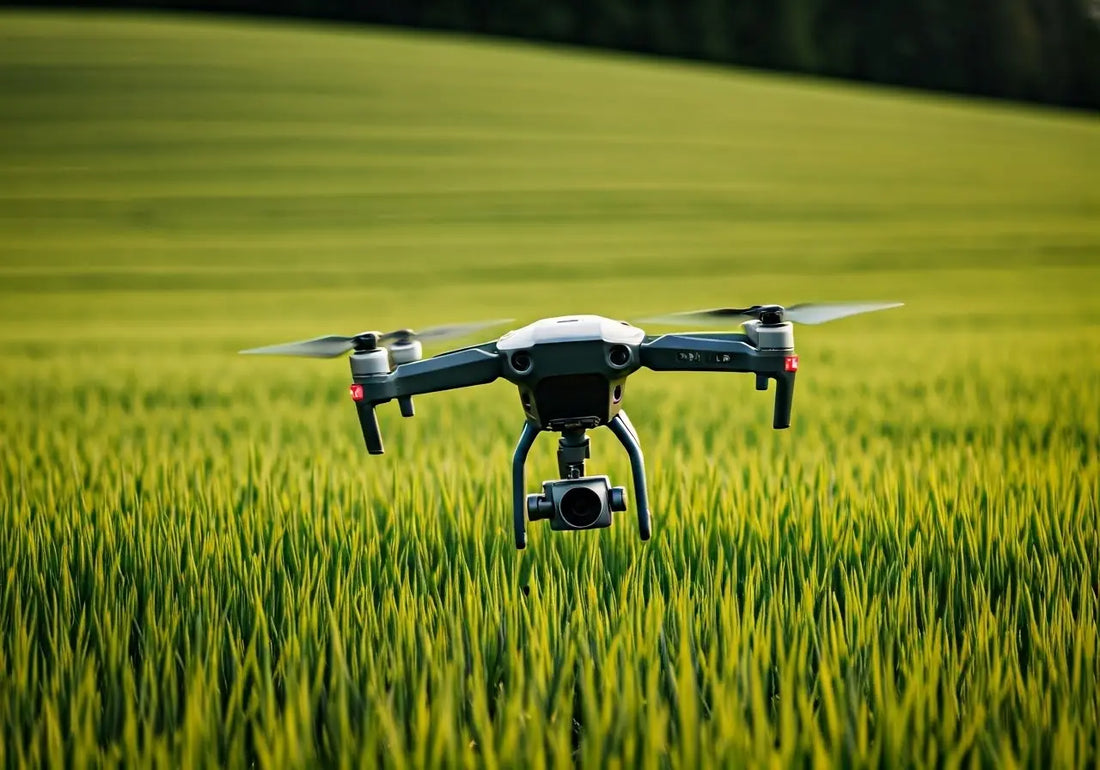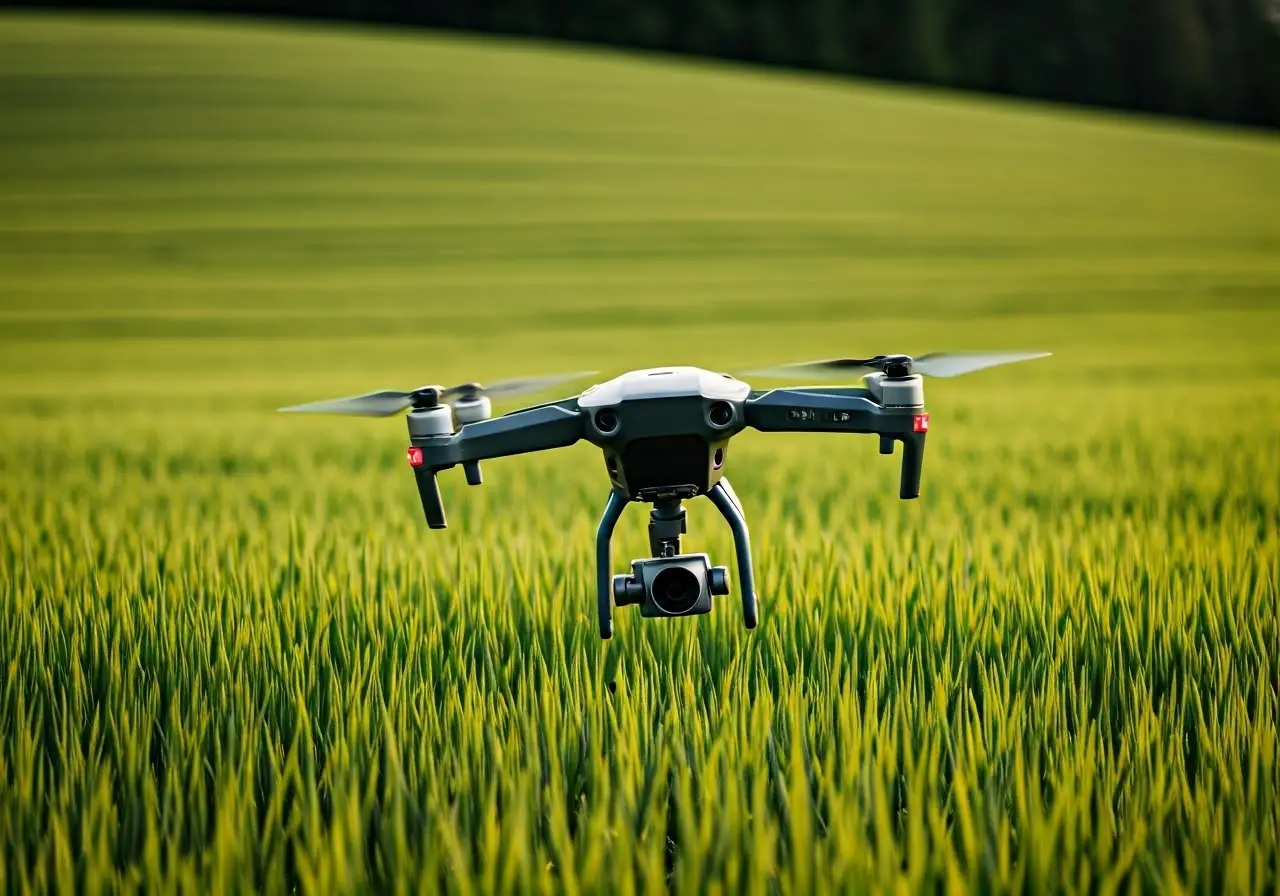
Understanding DJI Relay Technology for Precision Farming
Share
In recent years, precision farming has emerged as a critical advancement in agriculture, aiming to optimize crop yields while minimizing environmental impact. Central to this innovation is the use of advanced technologies like DJI Relay, which brings a new level of precision and efficiency to the farming industry. In this blog post, we will explore what DJI Relay Technology is, how it works, and its benefits for precision farming.
What is DJI Relay Technology?
DJI Relay Technology is a communication system designed to extend the reach of drones and improve data transmission in real-time. By using relay stations, this technology ensures seamless connectivity between drones and ground control stations, even over vast areas and challenging terrains.
At its core, the technology operates by establishing a series of relay stations that act as communication hubs between drones and control centers. This extended reach allows drones to operate in regions where conventional signal transmission might falter. For instance, in expansive fields where direct sight is obstructed, relay stations serve as intermediaries, maintaining a robust link for data exchange. This network of relay points is especially useful in topographically diverse regions where communication signals are often disrupted by natural obstacles. Additionally, the implementation of DJI Relay within the agricultural sector is setting new standards for remote monitoring and operational efficiency.
How DJI Relay Enhances Precision Farming
Precision farming relies heavily on accurate data collection and analysis. DJI Relay Technology enhances these processes by ensuring uninterrupted data transmission from drones to farmers, allowing for precise monitoring of crops, soil conditions, and weather patterns. This enables farmers to make timely decisions regarding irrigation, fertilization, and pest control.
Continuous, real-time communication facilitated by DJI Relay is pivotal for precision farming. Through consistent data flow, farmers can receive updates on crop health and soil conditions, enabling them to react promptly to changes. This level of insight is invaluable during the growing season, where swift responses to environmental changes can mean the difference between a successful harvest and significant crop loss. Moreover, precision farming supported by DJI Relay allows for the integration of data analytics tools and predictive models, which can forecast potential yield outcomes and suggest optimal harvesting periods, further maximizing productivity.
Benefits of Using DJI Relay in Agriculture
There are several benefits to integrating DJI Relay Technology into modern farming practices. It reduces the need for manual labor, cuts costs associated with traditional farming methods, and minimizes the risk of data loss due to connectivity issues. Furthermore, the technology allows for better resource management, ultimately leading to increased crop yields and reduced environmental impact.
One of the most significant advantages of DJI Relay is its contribution to sustainable farming. By optimizing resource use and reducing waste, farmers can achieve higher yields with fewer inputs, thus promoting environmentally friendly practices. Furthermore, the ability to monitor and manage large fields remotely diminishes the need for frequent human intervention, conserving energy and reducing carbon emissions associated with transportation and machinery operation. Additionally, the enhanced precision offered by DJI Relay ensures that inputs like water and fertilizers are used efficiently, minimizing environmental runoff and preserving nearby ecosystems. Such advancements position DJI Relay as a critical component in the drive towards sustainable agricultural practices.
Challenges and Future Prospects
While DJI Relay Technology offers numerous advantages, it also presents certain challenges, such as the initial cost of implementation and the need for technical expertise. However, as the technology continues to evolve and become more accessible, these challenges are expected to diminish. The future of precision farming with DJI Relay looks promising, with potential developments in AI and machine learning further enhancing its capabilities.
A noteworthy challenge facing the widespread adoption of DJI Relay in agriculture is the technological learning curve. Farmers accustomed to traditional methods may find the integration of advanced equipment and software daunting. However, with increased accessibility to training programs and user-friendly interfaces, these hurdles are gradually being addressed. Looking ahead, developments in AI and machine learning are projected to enhance the decision-making process in precision farming. By automating data analysis and providing real-time actionable insights, these technologies could significantly streamline operations, allowing farmers to focus more on strategic planning rather than day-to-day decision-making. As DJI Relay continues to integrate these cutting-edge technologies, its role in revolutionizing agriculture is only set to expand.
Embracing the Future of Precision Farming with DJI Relay Technology
DJI Relay Technology is paving the way for a more efficient and sustainable future in agriculture. By enhancing communication and data transmission capabilities, farmers can make more informed decisions, reduce waste, and increase their yields. As this technology continues to evolve, it will undoubtedly play a crucial role in the advancement of precision farming, leading to more productive and environmentally friendly agricultural practices.

